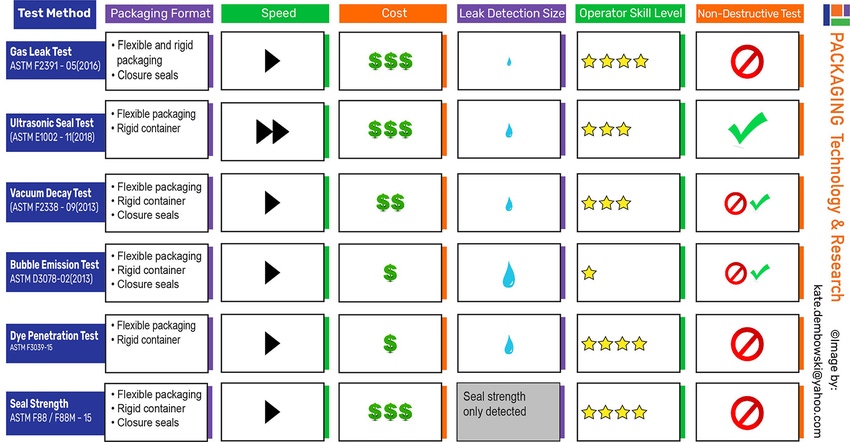A Guide to 6 Seal Test Methods for Food Packaging
Six new reasons drive home the importance of determining seal integrity using these common test methods.
November 10, 2021

Enhanced package seal integrity is once again top-of-mind due to recent supply and demand challenges that include these six reasons:
Obtaining consistent seal layers;
Fine-tuning package layers to enable recycling;
Qualifying alternate suppliers or package materials;
Faster production line-speeds to keep up with demand;
Increase in ecommerce;
Use of alternate distribution channels.
Maintaining the integrity of package seals is a food quality and food safety issue. Quality control Standard Operating Procedures for measuring seals at production startups and shift changes are determined based on the required seal integrity, labor and sealing equipment variability, and package material consistency.
In terms of food safety, film-seal integrity is often an essential Hazard Analysis Critical Control Point (HACCP). For example, small leaks in the seal area can expose the product to cocci- (1 µm) or rod-shaped (0.5 µm x 10 µm) bacteria, and larger leaks can expose the product to contaminated water droplets that have a much larger order of magnitude than bacteria.
Six standard methods for testing seals can be modified to meet the needs of a specific package. These are…
Gas leak test: The migration of helium through a sealed package is measured via mass spectrophotometer. Helium is used due to its low presence in the atmosphere, its nonexplosive nature, and because it is chemically inert. As a result, ultra-fine leaks that are seven orders of magnitude smaller than other test methods can be detected. The Dansensor LeakMatic II is an in-line diversion testing system.
Ultrasonic seal test: Leaks are exposed to ultrasound and emit an altered frequency than the remainder of the seal area so that the specific location of the leak is determined. This is method has broad application and is often used to detect the presence of contaminants in the seal area.
Vacuum Decay test: When a sample package is placed under vacuum, leaks are detected when the vacuum decreases in the area surrounding the package. Inficon’s Contura S400 Seal Tester is an example of a vacuum decay tester.
Bubble emission test: The internal pressure that seals can withstand is measured using a vacuum. When a vacuum is applied, packages swell due to the pressure differential, and leaks are apparent when the operator sees air bubbles emerge from a sample submerged in water. Modified ASTM bubble emission methods are common because the equipment needed for the modified method — air hose, needle, and water — is usually available.
Dye penetration test: An operator applies a dye to one side of the seal area and then examines the other side of the seal to assess if the dye transferred through the seal. Detectable leaks are six orders of magnitude larger than most permeants such as oxygen, carbon dioxide, nitrogen, so this method is not useful to detect small leaks relevant to modified atmosphere packaging, gas flushed packaging, or packaging requiring a hermetic seal for the shelf life of the product.
Seal Strength test: The maximum force required to pull apart a 1-inch sealed package section is measured. Test results are often affected by the mechanical properties of the packaging material.
Claire Sand, PhD, has 30+ years of experience in industry and academia. She's owner of Packaging Technology and Research and Gazelle Mobile Packaging and is an Adjunct Professor, CalPoly, Michigan State University, and the University of Minnesota. Her email is [email protected]
About the Author(s)
You May Also Like




